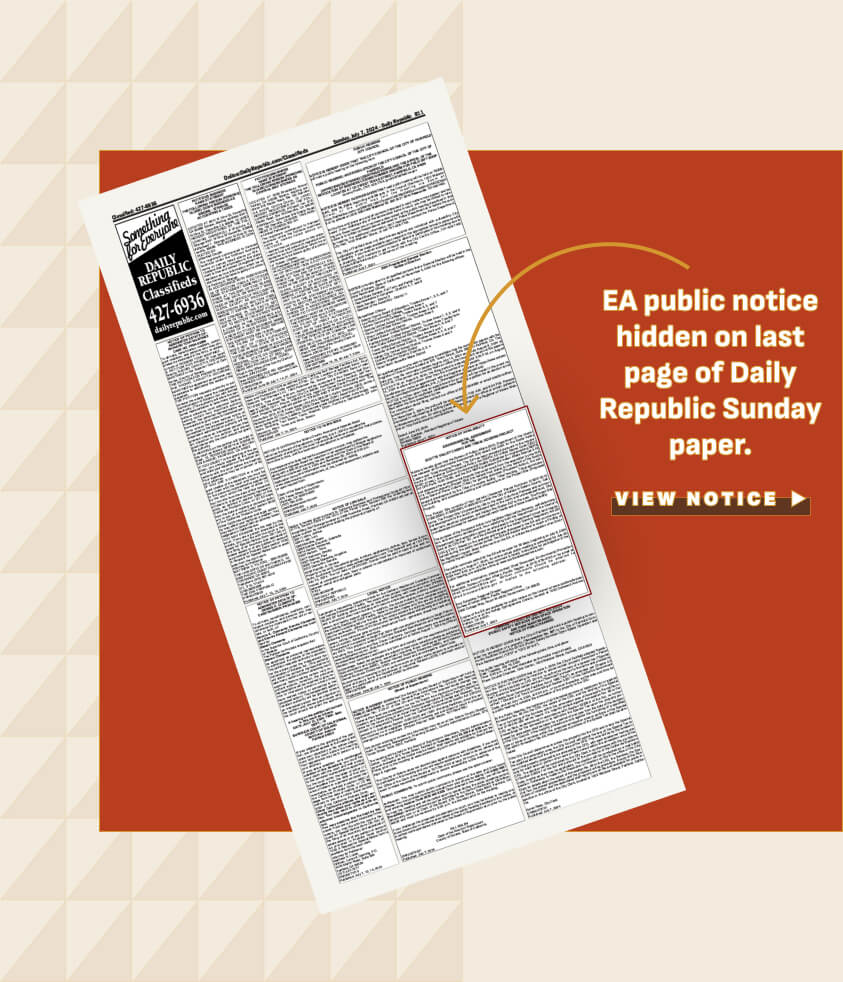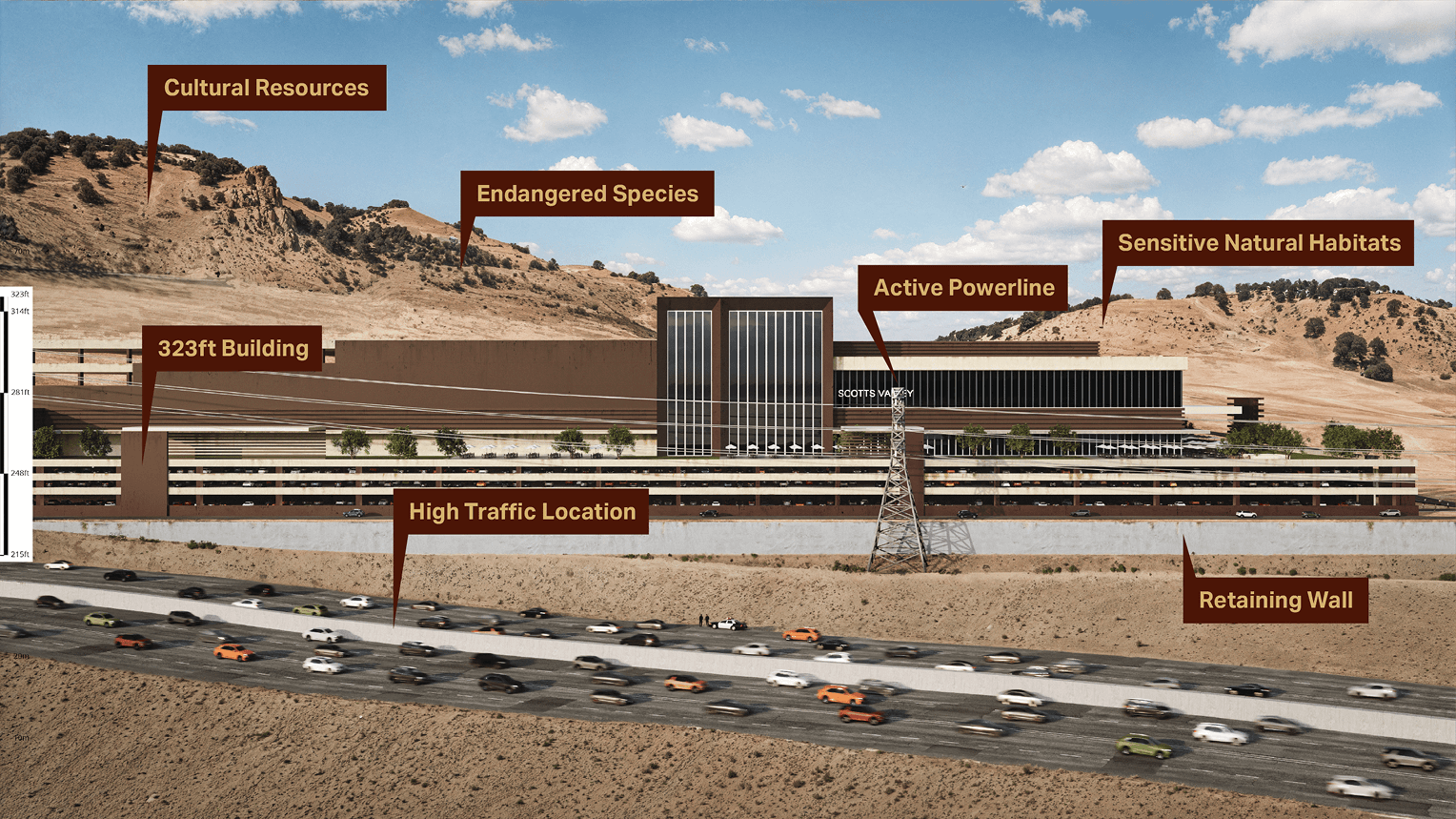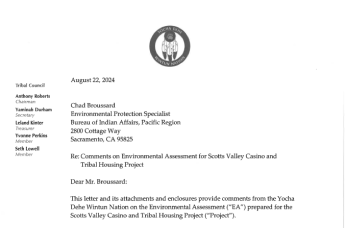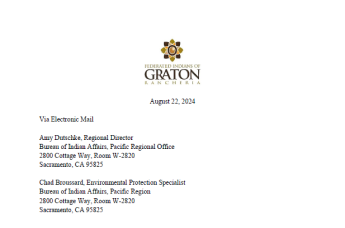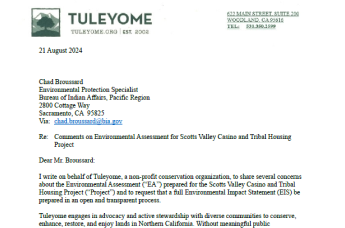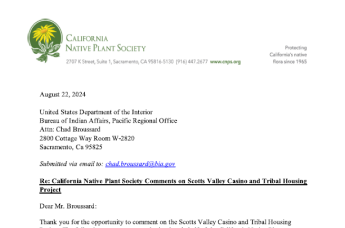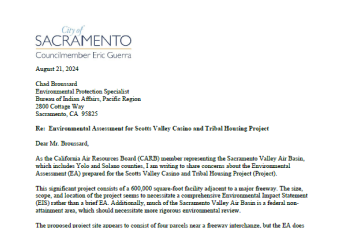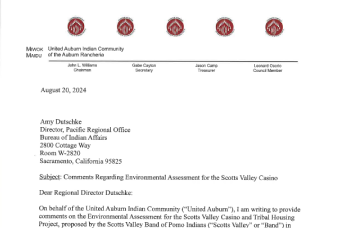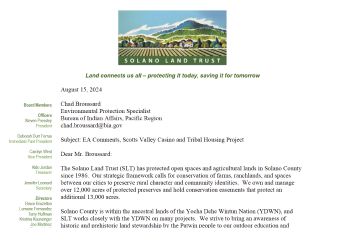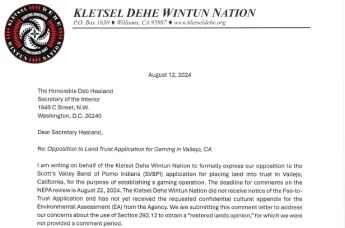Environmental Assessment
Share
A Woefully Inadequate Environmental Assessment
As part of its apparent plan to rubber stamp the Scotts Valley project, the Department of the Interior released a rushed, inadequate Environmental Assessment (“EA”) that fails to disclose, evaluate, mitigate, or consider reasonable alternatives to the project’s significant environmental impacts.
The document, prepared by Scotts Valley’s paid contractors without prior public notice or input from the City of Vallejo, Solano County, or any interested tribal stakeholders – was released quietly over a holiday weekend.
By opting for a brief Environmental Assessment, rather than a comprehensive Environmental Impact Statement, the Department of the Interior has purposely ignored the significant consequences this project would have on endangered species, tribal cultural resources, wetlands, and other sensitive resources.
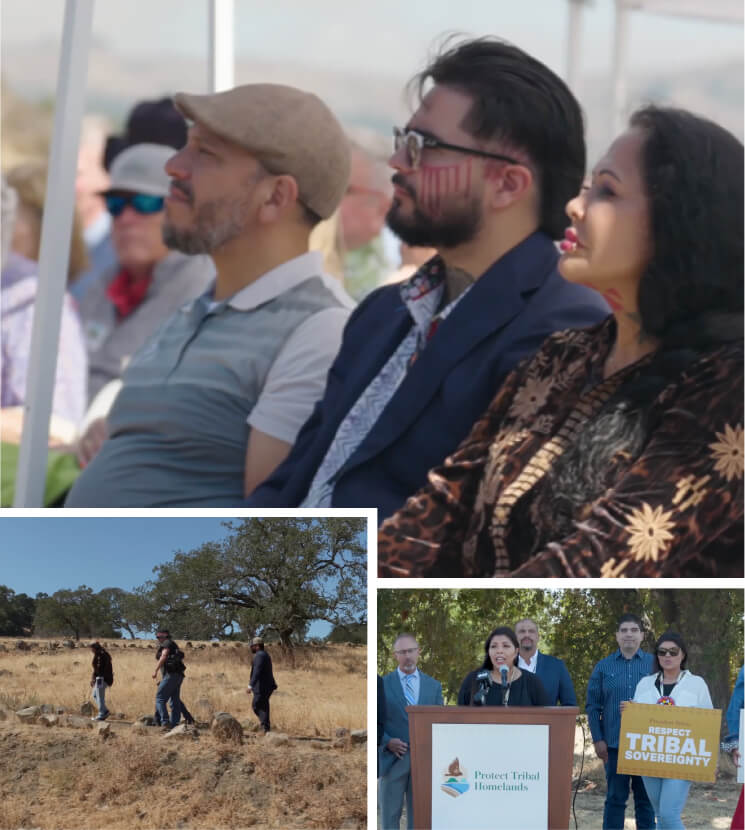
A Rushed and Secretive Effort to Rubber Stamp the Proposal
Publication of Draft Environmental Assessment
Yocha Dehe Initial Response to Environmental Assessment
Request for Extension
Yocha Dehe requests a 30-day extension for the comment period to properly review the environmental assessment and provide substantive feedback.
Numerous other interested parties follow with extension requests of their own, including Kletsel Dehe, Solano County, the Lt. Governor, several members of Congress, Cachil Dehe Band of Wintun Indians, and Assembly Majority Leader Cecilia Aguilar-Curry.
Comment Period Extension
Environmental Assessment Zoom Meeting
Press Conference & Comment Submission
Environmental Assessment Comment letter
Yocha Dehe submits a detailed set of comments identifying the many and varied flaws with the EA.
Numerous other interested parties also submitted comments, including other tribes, local governments, and environmental groups.
An Inadequate and Misleading Assessment
The Environmental Assessment for the Scotts Valley Project is riddled with inaccuracies and misleading site plans that fail to meet the most basic requirements of federal law.
For exmple, it fails to include any mitigation measures for the destruction of critical habitats for multiple endangered and threatened species; neglects to adequately address air quality concerns; includes a traffic analysis based on fundamentally flawed data, completely misrepresenting the traffic impact that it will cause; fails to provide evidence for its estimation of water usage; neglects to account for the massively significant engineering and construction challenges; and will desecrate a Yocha Dehe cultural site.
